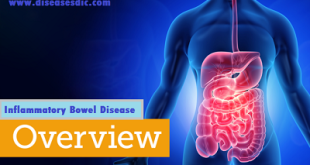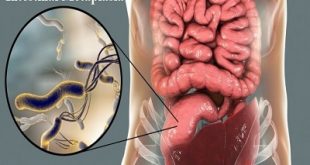Overview – Infant Jaundice
Infant jaundice or Newborn Jaundice is a yellow discoloration of a newborn baby’s skin and eyes. Infant jaundice occurs because the baby’s blood contains an excess of bilirubin (bil-ih-ROO-bin), a yellow pigment of red blood cells.
Infant jaundice is a common condition, particularly in babies born before 38 weeks’ gestation (preterm babies) and some breastfed babies. Infant jaundice usually occurs because a baby’s liver isn’t mature enough to get rid of bilirubin in the bloodstream. In some babies, an underlying disease may cause infant jaundice.
Most infants born between 35 weeks’ gestation and full-term need no treatment for jaundice. Rarely, an unusually high blood level of bilirubin can place a newborn at risk of brain damage, particularly in the presence of certain risk factors for severe jaundice.
Pathophysiology of Infant Jaundice
Neonatal physiologic jaundice results from the simultaneous occurrence of the following two phenomena:
- Bilirubin production is elevated because of the increased breakdown of fetal erythrocytes. This is the result of the shortened lifespan of fetal erythrocytes and the higher erythrocyte mass in neonates.
- Hepatic excretory capacity is low both because of low concentrations of the binding protein ligandin in the hepatocytes and because of low activity of glucuronyl transferase, the enzyme responsible for binding bilirubin to glucuronic acid, thus making bilirubin water-soluble (conjugation).
What causes infant jaundice?
Babies at highest risk for developing newborn jaundice are:
- Premature babies (babies born before 37 weeks’ gestation)
- Babies who aren’t getting enough breast milk or formula, either because they’re having a hard time feeding or because their mother’s milk isn’t in yet
- Babies whose blood type isn’t compatible with the blood type of their mother
A baby whose blood type isn’t compatible with that of their mother can develop a buildup of antibodies that can destroy their red blood cells and cause a sudden rise in bilirubin levels.
Other causes of newborn jaundice include:
- Bruising at birth or another internal bleeding
- Liver problems
- An infection
- An enzyme deficiency
- An abnormality in your baby’s red blood cells
Risk factors
Major risk factors for jaundice, particularly severe jaundice that can cause complications, include:
Premature birth. A baby born before 38 weeks of gestation may not be able to process bilirubin as quickly as full-term babies do. Premature babies also may feed less and have fewer bowel movements, resulting in less bilirubin eliminated through the stool.
Significant bruising during birth. Newborns who become bruised during delivery gets bruises from the delivery may have higher levels of bilirubin from the breakdown of more red blood cells.
Blood type. If the mother’s blood type is different from her baby’s, the baby may have received antibodies through the placenta that cause abnormally rapid breakdown of red blood cells.
Breast-feeding. Breast-fed babies, particularly those who have difficulty nursing or getting enough nutrition from breast-feeding, are at higher risk of jaundice. Dehydration or a low caloric intake may contribute to the onset of jaundice. However, because of the benefits of breast-feeding, experts still recommend it. It’s important to make sure your baby gets enough to eat and is adequately hydrated.
Race. Studies show that babies of East Asian ancestry have an increased risk of developing jaundice.
Symptoms of infant jaundice
Jaundice usually appears about 3 days after birth and disappears by the time the baby is 2 weeks old.
In premature babies, who are more prone to jaundice, it can take 5 to 7 days to appear and usually lasts about 3 weeks.
It also tends to last longer in babies who are breastfed, affecting some babies for a few months.
If your baby has jaundice, their skin will look slightly yellow. The yellowing of the skin usually starts on the head and face, before spreading to the chest and stomach.
In some babies, the yellowing reaches their arms and legs. The yellowing may also increase if you press an area of skin down with your finger.
Changes in skin color can be more difficult to spot if your baby has a darker skin tone.
In these cases, yellowing may be more obvious elsewhere, such as:
- In the whites of their eyes
- Inside their mouth
- On the soles of their feet
- On the palms of their hands
A newborn baby with jaundice may also:
- Be sleepy
- Not want to feed or not feed as well as usual
- Have dark, yellow pee (it should be colorless)
- Have pale poo (it should be yellow or orange)
Complications of infant jaundice
High levels of bilirubin that cause severe jaundice can result in serious complications if not treated.
Acute bilirubin encephalopathy
Bilirubin is toxic to cells of the brain. If a baby has severe jaundice, there’s a risk of bilirubin passing into the brain, a condition called acute bilirubin encephalopathy. Prompt treatment may prevent significant lasting damage.
Signs of acute bilirubin encephalopathy in a baby with jaundice include:
- Listlessness
- Difficulty waking
- High-pitched crying
- Poor sucking or feeding
- Backward arching of the neck and body
- Fever
Kernicterus
Kernicterus is the syndrome that occurs if acute bilirubin encephalopathy causes permanent damage to the brain. Kernicterus may result in:
- Involuntary and uncontrolled movements (athetoid cerebral palsy)
- Permanent upward gaze
- Hearing loss
- Improper development of tooth enamel
Exams and Tests
Health care providers will watch for signs of jaundice at the hospital. After the newborn goes home, family members will usually spot jaundice.
Any infant who appears jaundiced should have bilirubin levels measured right away. This can be done with a blood test.
Many hospitals check total bilirubin levels on all babies at about 24 hours of age. Hospitals use probes that can estimate the bilirubin level just by touching the skin. High readings need to be confirmed with blood tests.
Tests that will likely be done include:
- Complete blood count
- Coombs test
- Reticulocyte count
Further testing may be needed for babies who need treatment or whose total bilirubin level is rising more quickly than expected.
Treatment
Treatment is not needed most of the time.
When treatment is needed, the type will depend on:
- The baby’s bilirubin level
- How fast the level has been rising
- Whether the baby was born early (babies born early are more likely to be treated at lower bilirubin levels)
- How old the baby is
A baby will need treatment if the bilirubin level is too high or is rising too quickly.
A baby with jaundice needs to take in plenty of fluids with breast milk or formula:
- Feed the baby often (up to 12 times a day) to encourage frequent bowel movements. This help removes bilirubin through the stools. Ask your provider before giving your newborn extra formula.
- In rare cases, a baby may receive extra fluids by IV.
Some newborns need to be treated before they leave the hospital. Others may need to go back to the hospital when they are a few days old. Treatment in the hospital usually lasts 1 to 2 days.
Sometimes, special blue lights are used on infants whose levels are very high. These lights work by helping to break down bilirubin in the skin. This is called phototherapy.
- The infant is placed under these lights in a warm, enclosed bed to maintain a constant temperature.
- The baby will wear only a diaper and special eye shades to protect the eyes.
- Breastfeeding should be continued during phototherapy, if possible.
- In rare cases, the baby may need an intravenous (IV) line to deliver fluids.
If the bilirubin level is not too high or is not rising quickly, you can do phototherapy at home with a fiber-optic blanket, which has tiny bright lights in it. You may also use a bed that shines light up from the mattress.
- You must keep the light therapy on your child’s skin and feed your child every 2 to 3 hours (10 to 12 times a day).
- A nurse will come to your home to teach you how to use the blanket or bed, and to check on your child.
- The nurse will return daily to check your child’s weight, feedings, skin, and bilirubin level.
- You will be asked to count the number of wet and dirty diapers.
In the most severe cases of jaundice, an exchange transfusion is required. In this procedure, the baby’s blood is replaced with fresh blood. Giving intravenous immunoglobulin to babies who have severe jaundice may also be effective in reducing bilirubin levels.
Intravenous immunoglobulin (IVIg) – in cases of rhesus or ABO incompatibility, the infant may have a transfusion of immunoglobulin; this is a protein in the blood that lowers the levels of antibodies from the mother, which are attacking the infant’s red blood cells.
Can infant jaundice be prevented?
There’s no real way to prevent newborn jaundice. During pregnancy, you can have your blood type tested.
After birth, your baby’s blood type will be tested, if necessary, to rule out the possibility of blood type incompatibility that can lead to newborn jaundice. If your baby does have jaundice, there are ways you can prevent it from becoming more severe:
- Make sure your baby is getting enough nutrition through breast milk. Feeding your baby 8 to 12 times a day for the first several days ensures that your baby isn’t dehydrated, which helps bilirubin pass through their body more quickly.
- If you’re not breastfeeding feeding your baby formula, give your baby 1 to 2 ounces of formula every 2 to 3 hours for the first week. Preterm or smaller babies may take smaller amounts of formula, as will babies who are also receiving breast milk. Talk to your doctor if you’re concerned your baby is taking too little or too much formula, or if they won’t wake to feed at least 8 times per 24 hours.
Carefully monitor your baby for the first five days of life for the symptoms of jaundice, such as yellowing of the skin and eyes.
If you notice that your baby has the symptoms of jaundice, call your doctor immediately.
 Diseases Treatments Dictionary This is complete solution to read all diseases treatments Which covers Prevention, Causes, Symptoms, Medical Terms, Drugs, Prescription, Natural Remedies with cures and Treatments. Most of the common diseases were listed in names, split with categories.
Diseases Treatments Dictionary This is complete solution to read all diseases treatments Which covers Prevention, Causes, Symptoms, Medical Terms, Drugs, Prescription, Natural Remedies with cures and Treatments. Most of the common diseases were listed in names, split with categories.








what are the precaution to be taken when the baby is in phototherapy?
Expose as much of the skin surface as possible to the phototherapy light. To maximise skin exposure, dress the baby in a nappy and their protective eye covers only.